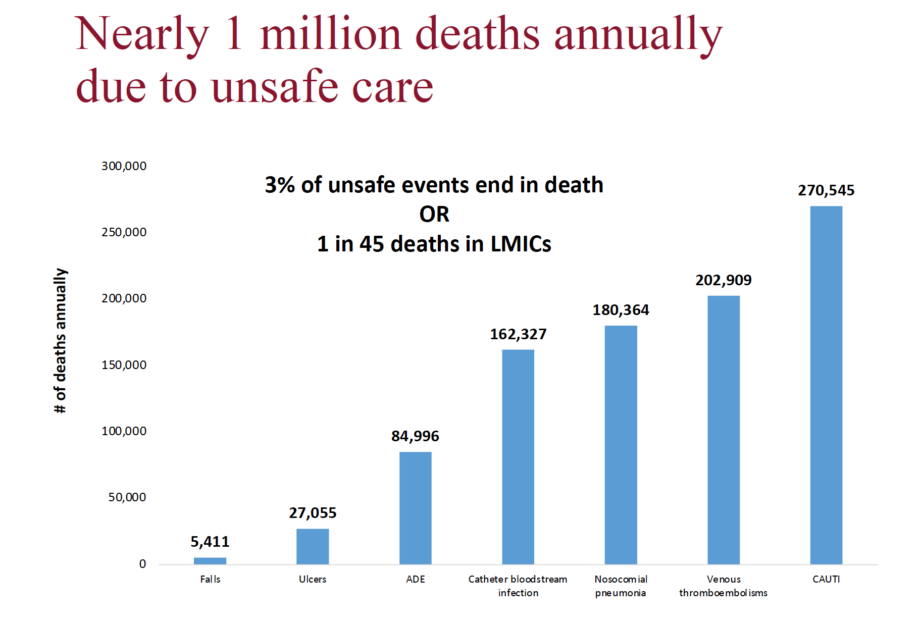Overview
Safety is a fundamental domain of healthcare quality. A number of studies from high income countries estimate that a large number of citizens are injured or killed due to adverse events, placing unsafe care within the top twenty causes of death globally. As India works to expand health coverage, particularly improved access to hospital-based care and acute services, more people than ever before will come into contact with the Indian health system. This increase in utilization makes it imperative that policymakers more clearly quantify and prioritize the problem of unsafe medical care in Indian inpatient settings. Adverse events, or injuries that result from medical care, can include both errors (such as the administration of the wrong drug to the patient), as well as events that are not so easily preventable (for instance, an allergic reaction to a medicine that the patient hasn’t taken before).
These harmful events have direct financial costs and substantial opportunity costs for the health system in terms of time and resources spent treating the harm, as well as the loss in health to the individual, society, and nation. In addition, unsafe care can negatively impact the trust patients feel in the healthcare system and their willingness to access care. Despite the importance of assessing unsafe care, there has been a relative paucity of information about how often these types of events occur in India and their corresponding clinical burden. An obvious challenge to estimating the burden of unsafe care is the lack of existing or comparable data on adverse events. Yet, we cannot improve safety without a foundational understanding of how to assess this issue – an undertaking that is plagued by both practical and political challenges.
In this session we will review a diverse range of strategies and discuss their application. After participating in this session, one should be able to:
- Situate patient safety within the dominant quality of care frameworks
- Understand key tools and measurement strategies that can be used to assess patient safety and safety culture
- Unpack the strengths and weaknesses of different approaches, particularly in contexts where resources may be constrained
- Engage in critical discussion with peers on the role clinical context and culture plays in relation to patient safety
The session is designed for clinicians and researchers who care about health and healthcare and wish to learn more about how to measure and improve the safety of that care for patients and, ultimately, hold systems accountable to patients through performance measurement.
Reading
- DiCuccio, M. H. (2015). The Relationship Between Patient Safety Culture and Patient Outcomes: A Systematic Review. Journal of Patient Safety, 11(3), 135–142. https://doi.org/10.1097/PTS.0000000000000058
- Fontana, G., Flott, K., Dhingra-Kumar, N., Durkin, M., & Darzi, A. (2019). Five reasons for optimism on World Patient Safety Day. The Lancet, 394(10203), 993–995. https://doi.org/10.1016/S0140-6736(19)32134-8
- Jha, A. K., Larizgoitia, I., Audera-Lopez, C., Prasopa-Plaizier, N., Waters, H., & Bates, D. W. (2013). The global burden of unsafe medical care: Analytic modelling of observational studies. BMJ Quality & Safety, 22(10), 809–815. https://doi.org/10.1136/bmjqs-2012-001748
Experience This Session
- View presentation slides here: HSA Session 7.
- Watch seminar session here.
